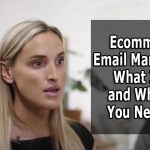Are you sick and weary of compiling lists of prospective customers of high quality, developing strategies for sending them cold emails, and receiving no responses? Is there any possibility that even one of those potential customers may become a client for your company? Is it possible that the time and effort you invested in doing research and gathering those email addresses has been for naught? Certainly not.
I spent the better part of a decade sending out cold emails to hundreds of thousands of potential customers, experimenting with a variety of methods and approaches to find what worked best. The following are some of the greatest strategies I’ve discovered for sending unsolicited emails:
1. Focus on the prospect, not yourself
Writing paragraphs on how fantastic your firm is and how terrific you are as an individual is the last thing you want to do right off the start since it will harm your prospects. There is a significant gap between intelligently presenting yourself to someone and giving someone who is clueless about who you are the same same spiel that you give to all of your SQLs.
Keep in mind that the majority of these folks probably have no idea who you are. If they do not believe that communicating with you would provide any benefit to them, then there is a good possibility that they will not respond. Make a nice introduction of yourself, and then go on to conversing about the other person. Give them an idea of how their lives or businesses may be improved by working with your organization, and demonstrate that you are really interested in helping them succeed.
2. Avoid being too Sales-y
It’s only normal to want to get ahead of yourself and ask to schedule a meeting right away; after all, that’s the entire point of sending a cold email in the first place. However, keep in mind the old adage that “slow and steady wins the race.” This holds true for sending effective cold emails as well.
Think about the door-to-door salespeople that ring your doorbell, pretend to have a two-minute chat with you, and then go right into a pitch for a product you’ve never heard of. They do this in order to get you interested in buying their product. You are turned off by the experience, regardless of whether or not the product could be beneficial to you. It is uninvited, in your face, and, to tell you the truth, it seems like an invasion of your privacy.
If you begin to think of emailing in the same way that you think of treating people face to face, you will quickly realize that starting a conversation with “let’s set up a meeting this week!” is a surefire way to make people feel uncomfortable and put off. This realization will come to you as soon as you begin to think of emailing in the same way that you think of treating people face to face. Begin cautiously and initiate the discussion in the same manner as if you were in-person meeting this individual for the first time.
3. The Subject Line Is Equally as Important as the Message
Your email is only as effective as the subject line that you choose to use, and there are literally hundreds of publications and facts supported by research that demonstrate effective subject lines. The most useful information, however, is that which you can extract from your own previous email transmissions.
Take a look at the old sales emails you’ve sent and determine what resonates most with the people in your target market. Are there certain subject lines that you’ve utilized in the past that saw a high percentage of opens? If you currently have a process in place that is successful, there is no need to strive to create a better version of it. Perform your own experiments if you are still unclear of what will be successful.
Because there are so many different businesses, goods, and individuals in the world, trying to model one’s own success after that of another individual is not always a good idea. You should make use of samples as a reference, but you should never settle on what the view of another person is on what constitutes a “excellent subject line” unless you have tried it yourself.
If they don’t even bother to view your email, you won’t receive a response, so make sure the topic is engaging, specific, and different from the more than one thousand other messages that are now in their inbox.
4. Conduct Prospective Prospect Research
You wouldn’t be able to look someone in the eye and call them the incorrect name or mistake them for the other gender without feeling like a complete and utter idiot. You shouldn’t let the fact that you’re hiding behind a screen make you feel like you can have a discussion of lesser quality. Do your homework before contacting someone; that’s probably the most important piece of advice I can provide.
This individual has the potential to become a valuable customer; however, if you let them know that you did not put any time or effort into your outreach, it will make you appear desperate and cause them to press the “delete” button before they have even finished reading what you have to say.
This is an easy way to make sure that this person does not become a valuable customer. The internet has become ubiquitous in today’s society. The information that we need is available elsewhere. It is possible for us to exploit this to our advantage, and we should do so.
5. Show Respect
Let’s assume someone responds to one of your emails, and you become excited and are ready to set that meeting and seal that sale, so you hurry to respond, but then they suddenly become uninterested in continuing the conversation. However, given that they have responded to your email, we may assume that they are really considering what you have to offer.
You make the decision to respond once again after a few hours since it’s possible that they didn’t receive your initial email. They do not respond to it, therefore you have to wait until the following day (it has already been 12 hours!) and send another email. Do you see where I’m heading with this? As is the case with any kind of connection, if you rush into things and don’t give the other person room to thoughtfully consider the circumstances, the chances are high that they will flee the scenario as fast as possible.
Give them a moment to catch their breath in between touches. Would it irritate you if the same solicitor who you sent away the first time continued to ring your doorbell during dinner for a week in a row? Allow the dialogue to go as it normally would, and wait some time before you try to contact them again.
6. Make Your Email Outreach More Personal
Even if you have created the ideal template for a cold email, you will still need to customize it for each prospect, and I’m not simply talking about adding the prospect’s first name in the blank where it says “INSERT FIRST NAME HERE.” Carry out your investigation and make effective use of the information you find. Do they count college basketball as one of their interests? The ideal way to start a discussion. Their firm is featured in the media for XYZ. Even excellent opening discussion.
7. Provide Value
Tim Riesterer of Corporate Visions, who is one of my all-time favorite marketing and sales experts, assisted me in transforming the way that I prepared our sales presentation for my sales team so that it was more effective. All too often, I come across businesses that are so enthusiastic about their product or solution that they forget that it doesn’t matter how great your product or service is if you can’t convince people that they need it and buy into what you’re selling, your product won’t go very far.
It will be difficult for your prospect to become enthusiastic about the possibility of meeting with you or forming a relationship with you if you are unable to offer instant value or explain what the potential outcomes may be. People have a propensity to be more complacent by nature, and if they are content with where they are in life, why would they want to alter their circumstances? It is up to you to persuade potential customers that the danger of continuing on in their current manner is higher than the risk of making the switch to your company’s product, service, or solution.
In Conclusion
The practice of sending unsolicited emails through email has been around since the dawn of time, and it won’t go away as long as there are email accounts. Remember that you are sending emails to actual individuals, regardless of whether or not you choose to follow the advice in this article. Even though we are swamped with email, we manage to single out the messages that are most important. Why?
Because we can tell that it was written by a person and that this person has something significant to convey to us, Put some “human” into your emails, show that you care about the person you’re reaching out to, and come up with an attention-grabbing subject line to increase your chances of having success with cold emailing.
If you have a method or suggestion for sending cold emails that has been effective in the past, I would be very interested in hearing about it.



